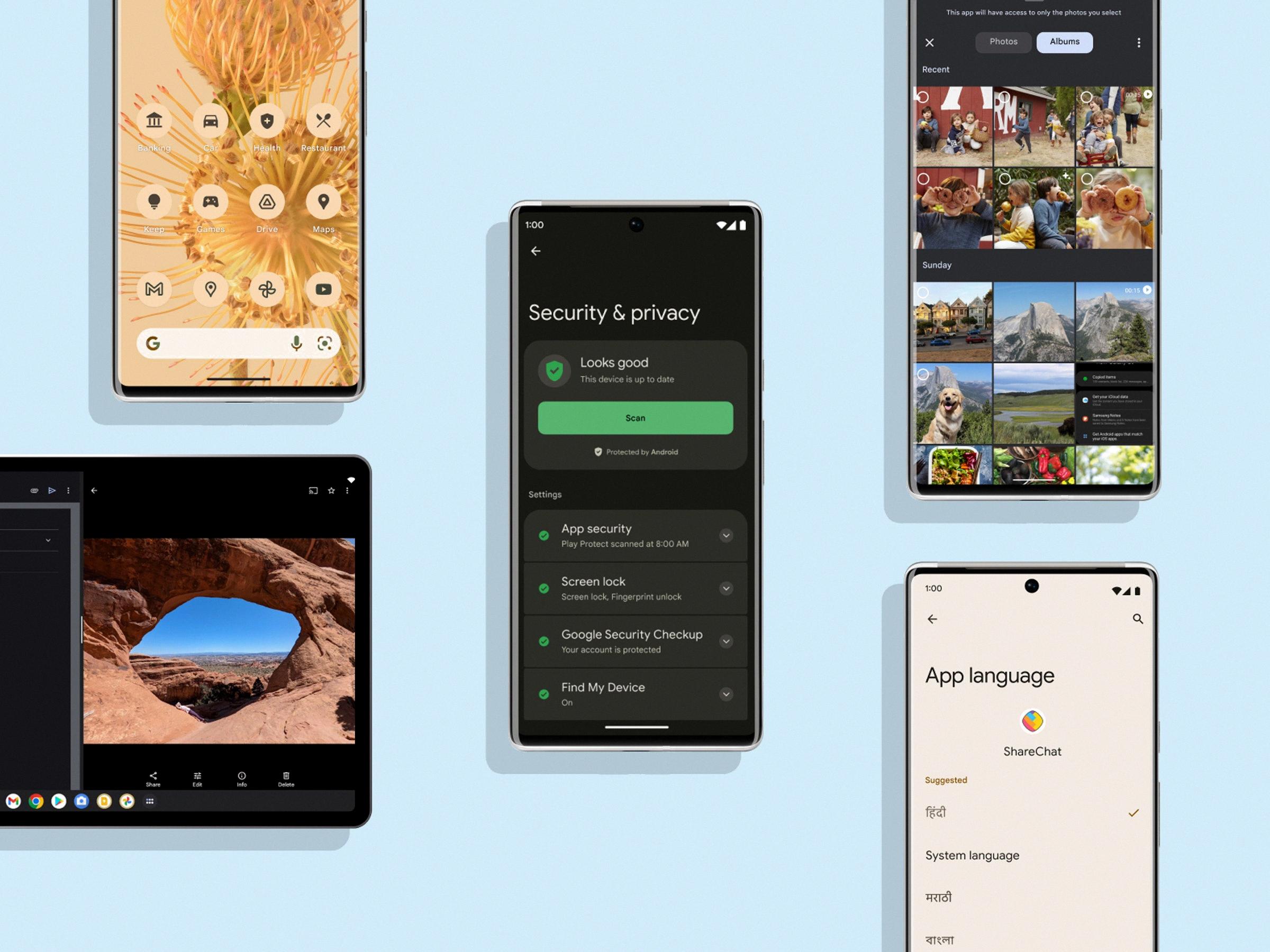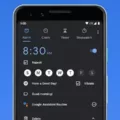Smartphone Operating Systems: A Comprehensive Guide
In today’s digital age, smartphones have become an essential part of our lives. These devices are powered by operating systems that allow us to navigate through various applications and features. However, not all operating systems are created equal. In this article, we will explore the world of smartphone operating systems and discuss one that does not fit the bill.
Android, developed by Google, is one of the most popular smartphone operating systems in the market. Known for its versatility and wide range of customization options, Android offers a user-friendly interface and access to millions of applications through the Google Play Store. It is an open-source platform, which means that developers can modify and enhance the system according to their needs.
IOS, developed by Apple, is another widely used smartphone operating system. Known for its sleek design and seamless integration with other Apple devices, iOS provides a seamless user experience. It offers a curated selection of applications through the Apple App Store and is known for its strong security measures.
Windows Phone OS, developed by Microsoft, is another player in the smartphone operating system market. Although it has not gained as much popularity as Android and iOS, Windows Phone OS offers a unique and intuitive user interface. It focuses on a tile-based design that allows users to personalize their home screens and access their favorite applications quickly.
Symbian, developed by Nokia, was once a dominant player in the smartphone operating system market. However, it has gradually lost its market share to other operating systems. Symbian offers a range of features and customization options, but it lacks the user-friendliness and app ecosystem found in Android and iOS.
Now, let’s discuss an operating system that does not fall under the category of a smartphone operating system – DOS. DOS, short for Disk Operating System, was predominantly used in the early days of personal computers. It was a command-line based operating system that lacked the graphical user interface (GUI) and touch-friendly features found in modern smartphone operating systems. Although DOS played a significant role in the evolution of operating systems, it is not designed or optimized for smartphones.
When it comes to smartphone operating systems, there are several options available to users. Android, iOS, Windows Phone OS, and Symbian have all played their part in shaping the smartphone landscape. However, DOS, a disk operating system, does not fit the criteria of a smartphone operating system due to its lack of a graphical user interface and touch-friendly features. As technology continues to evolve, it will be interesting to see how smartphone operating systems further develop and adapt to the changing needs of users.
Which Of The Following Is Not A Smartphone Operating System?
Answer: Among the options listed, DOS is not a smartphone operating system. DOS, which stands for Disk Operating System, was a popular operating system used in personal computers during the 1980s and 1990s. However, it is not designed or optimized for modern smartphones.
To clarify further, let’s examine the other options:
1. Android: Android is a widely used mobile operating system developed by Google. It is primarily used in smartphones and tablets and is known for its open-source nature, extensive app ecosystem, and customizable user interface.
2. Symbian: Symbian is a now-defunct operating system that was primarily used in Nokia smartphones. It was one of the early mobile operating systems and gained popularity in the early 2000s. However, it has been largely replaced by other operating systems, such as Android and iOS.
3. iOS: iOS is the operating system developed by Apple Inc. It is exclusively used in Apple’s iPhone, iPad, and iPod Touch devices. Known for its sleek design, user-friendly interface, and tight integration with other Apple services, iOS has a significant presence in the smartphone market.
DOS is not a smartphone operating system. It was widely used in personal computers but is not designed or optimized for mobile devices like smartphones.

What Is An Example Of A Smartphone Operating System?
A prime example of a smartphone operating system is Android. Developed by Google, Android is an open-source platform that powers millions of devices worldwide. It offers a user-friendly interface, a wide range of apps, and seamless integration with Google services. Android provides customization options, allowing users to personalize their devices according to their preferences. It supports a multitude of hardware configurations, making it compatible with various smartphones and tablets.
Another well-known smartphone operating system is iOS, developed by Apple exclusively for their iPhones. iOS is known for its sleek and intuitive design, offering a seamless user experience. It provides access to the Apple App Store, which offers a vast selection of apps specifically designed for iOS devices. iOS also integrates well with other Apple products, such as Mac computers and iPads, enabling seamless synchronization of data across devices.
Windows Phone OS, developed by Microsoft, is another example of a smartphone operating system. It offers a unique tile-based interface, providing users with a visually appealing and customizable home screen. Windows Phone OS offers integration with Microsoft services, such as Office and OneDrive, making it a preferred choice for those who heavily rely on these tools. However, the market share of Windows Phone OS has significantly decreased over the years, leading to decreased support and development for the platform.
Symbian, although less popular now, was once a widely used smartphone operating system. Developed by Nokia, Symbian was known for its stability and versatility. It offered a wide range of features and was compatible with numerous hardware configurations. However, with the rise of Android and iOS, Symbian lost its market dominance and ceased development in 2014.
Android, iOS, Windows Phone OS, and Symbian are examples of smartphone operating systems that have been prominent in the mobile industry. Each of these operating systems has its own unique features, user interfaces, and ecosystem of apps.
Which Of The Following Is Not An Operating System?
One of the options listed which is not an operating system is Oracle. Oracle is a multi-model database management system, not an operating system. An operating system is a software that manages computer hardware and software resources and provides common services for computer programs. It acts as an intermediary between the computer hardware and the user applications. Common examples of operating systems include Windows, macOS, Linux, iOS, and Android. These operating systems provide functionalities like file management, memory management, device management, and user interface. On the other hand, Oracle is a database management system that allows for the storage, retrieval, and management of data in a structured manner. It is widely used for enterprise-level applications and is known for its reliability, scalability, and security features. Oracle is not an operating system but rather a database management system.
Which Operating System Is Not Supported By Mobile Devices?
Several versions of the Android operating system are no longer supported by mobile devices. These include:
1. Android 1.0 (No codename): This was the initial version of Android released in 2008. It was the first commercially available version but is no longer supported by modern devices.
2. Android 1.1 (Petit Four): Released shortly after Android 1.0, this update introduced minor improvements and bug fixes. However, it is also no longer supported by current mobile devices.
3. Android 1.5 (Cupcake): This version, released in 2009, brought significant changes and added features such as an on-screen keyboard and video recording. However, due to its age, it is no longer supported by mobile devices.
It’s worth noting that these versions are quite outdated, and manufacturers and developers have shifted their focus to newer versions of Android to provide users with better performance, security, and features.
Conclusion
Smartphone operating systems play a vital role in the functionality and user experience of mobile devices. They are responsible for managing the hardware and software components of a smartphone, allowing users to interact with various applications and features.
There are several major smartphone operating systems available in the market, including Android, iOS, Windows Phone, and Symbian. Each of these operating systems has its own unique features, interface, and ecosystem, catering to different user preferences and needs.
Android, developed by Google, is the most popular and widely used operating system worldwide. It offers a high level of customization, a vast library of applications through the Google Play Store, and seamless integration with Google services.
IOS, developed by Apple, is known for its sleek and user-friendly interface. It offers a seamless integration with Apple’s ecosystem, including iCloud, iTunes, and the App Store. iOS also prioritizes security and privacy, making it a popular choice among users concerned about data protection.
Windows Phone, developed by Microsoft, provides a unique and customizable user interface known as Live Tiles. It offers a seamless integration with other Microsoft services and provides a consistent user experience across devices.
Symbian, although not as popular as it once was, was one of the earliest smartphone operating systems. It was known for its stability and efficiency, especially in terms of battery life. However, Symbian has been largely phased out in favor of more modern operating systems.
Choosing the right smartphone operating system depends on individual preferences, needs, and the desired ecosystem. Android, iOS, Windows Phone, and Symbian all offer unique features and experiences, catering to a wide range of users. It is important to consider factors such as user interface, app availability, security, and integration with other devices and services when selecting a smartphone operating system.



